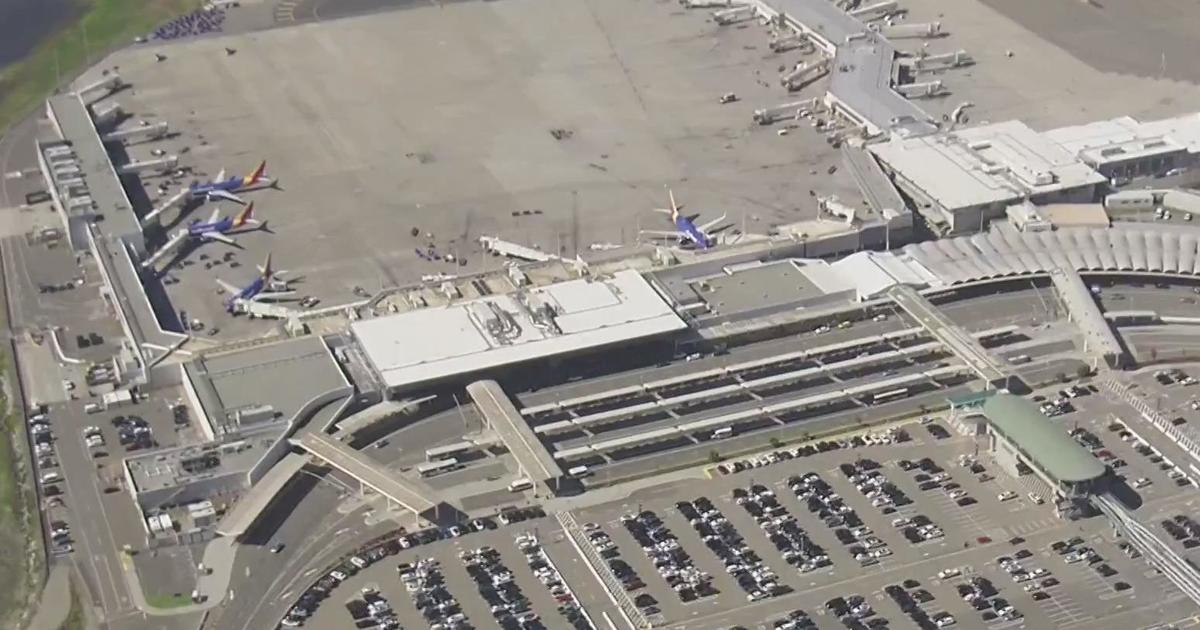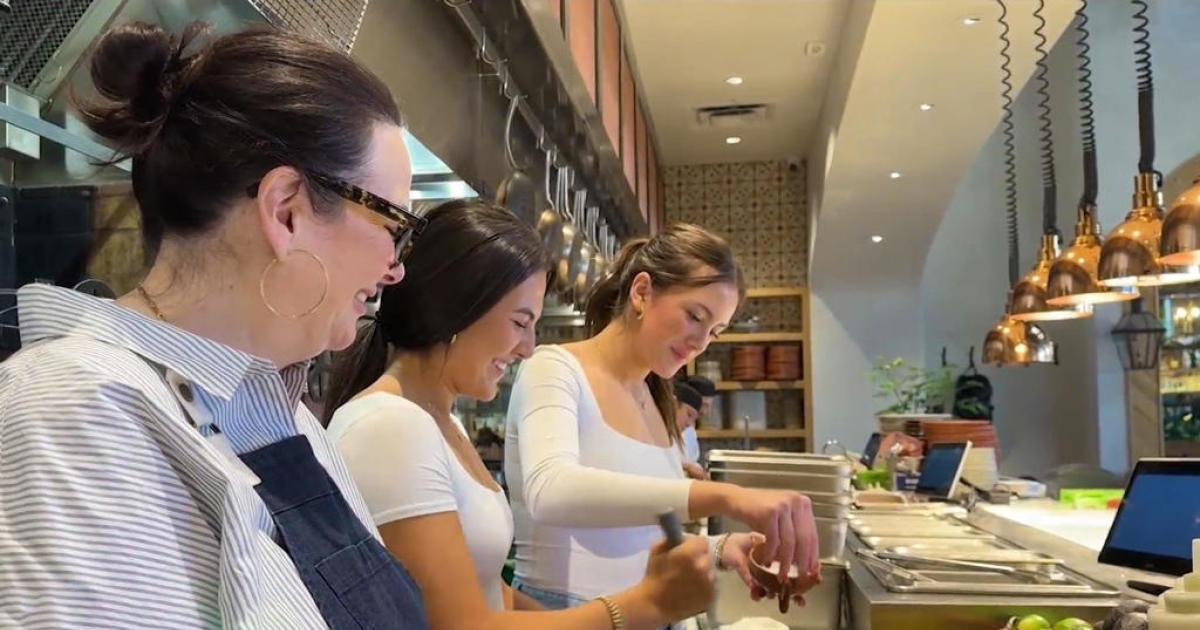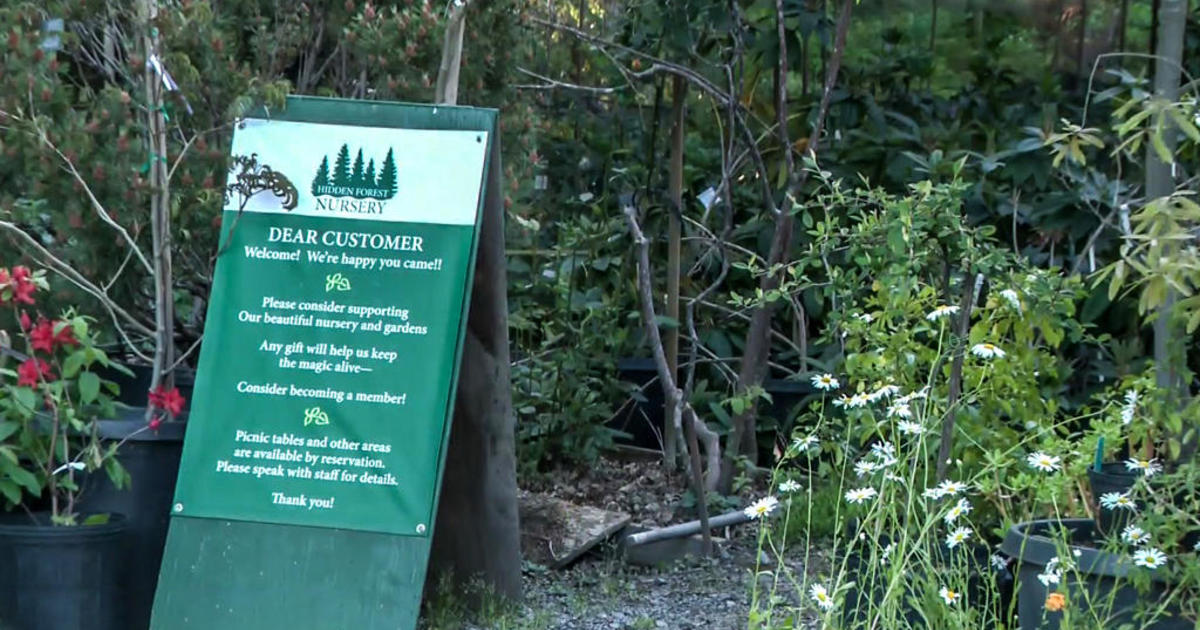A Medical Miracle -- 1958 KPIX 5 Live Broadcast Of Open Heart Surgery
by Molly McCrea
SAN FRANCISCO (CBS SF) -- Tommy Hunter was an eight-year-old Oakland boy who simply wanted to play with his friends, but his ailing heart would not allow it.
So on June 23, 1958, little Tommy made television history when he underwent what was then cutting-edge open heart surgery and the KPIX 5 cameras were there to broadcast it to one million Bay Area viewers who held their collective breaths and prayed for the young boy's survival.
"Nothing like it has happened in San Francisco television and I'm tempted to say national television," said former KPIX producer Dave Parker, who was a member of the historic broadcast team. "This was a big deal."
1958 KPIX 5 Live Broadcast Of Open Heart Surgery -- Part 1
There was no videotape at that time. The surgery broadcast was preserved on kinescope -- a recording of a television program on film, directly through the lens of a film camera that's been focused on the screen of a television monitor.
"This is extraordinary," said Dr. Joseph Woo, who is the current Chair of the Department of Cardiothoracic Surgery at Stanford Medical Center. "This event occurred only a few years after the start of heart surgery."
RELATED: Stanford Cardiac Specialists Amazed By 1958 Open Heart Broadcast
Back in 1958, Stanford surgeons and doctors associated with the San Francisco Medical Society approached KPIX. They asked to meet with Parker, who was then the head of Public Service Department at Channel 5.
The goal of the project, the surgeons explained, was to introduce viewers to the latest in modern medicine, particularly the heart-lung machine. The development and improvements with the machine had made open heart surgery possible in human patients.
1958 KPIX 5 Live Broadcast Of Open Heart Surgery -- Part 2
The device performed the function of the heart and lungs during surgery, so surgeons could work on the inside of the heart. They asked KPIX if the station would broadcast an open heart surgery using the device. It would be an ambitious remote. The location was at the Stanford Operating Amphitheatre in San Francisco, which was then at Clay and Webster Streets.
KPIX managers had to think long and hard about the proposal. The program would be live and unedited. The doctors told KPIX that the patient would be a small boy.
The station managers expressed concern -- What if the little boy died on the air? That would certainly traumatize his family as well as viewers and staff. The surgeons assured KPIX that the device was safe, and that the little boy would survive.
After much internal debate, KPIX gave the project the green light. The surgery would occur at the same time the American Medical Association was in town, holding its annual convention.
1958 KPIX 5 Live Broadcast Of Open Heart Surgery -- Part 3
The station brought in a physician who would be on standby in case the little boy died. The producers prayed that it would not be necessary to call upon that doctor's expertise, but they wanted to be prepared to explain what happened, and comfort the audience in case it did.
KPIX technicians hauled big cameras, and snaked cables into the operating room. They parked a big remote truck outside on the street. Everything and everyone needed disinfecting and were all wiped down.
"We had three cameras in the operating room," Parker said. "Camera "1" was chained to the ceiling.to look down on the surgical wound."
It was pre-focused, so no one needed to touch the camera
1958 KPIX 5 Live Broadcast Of Open Heart Surgery -- Part 4
Camera 2 was fixed on the surgical team and Camera 3 was on a tripod with wheels and could be moved around. Camera 3's major role was dedicated to capturing the heart-lung machine.
The cameras were big and cumbersome. It would take two strong men to place one on a tripod. KPIX technicians also put microphones all around the operating amphitheater. In addition, the surgeons would wear microphones.
The physician who would be holding the scalpel was a pioneer in heart surgery: His name was Dr. Frank Gerbode.
Gerbode was a member of a team of surgeons who performed one of the first open heart surgeries in 1954. He would be joined by 3 other surgeons, and an experienced surgical team. Dr. John Osborn would be in charge on the heart-lung machine.
1958 KPIX 5 Live Broadcast Of Open Heart Surgery -- Part 5
Tommy Hunter lived in Oakland with his mother and his little brother. His dad, Tom Hunter. Sr., was stationed in the Philippines with the U.S. Coast Guard. He was given leave to come home to be with his boy as he underwent the delicate procedure.
KPIX cameras and a reporter visited the family about a month before the surgery, and saw how Tommy had a tough time keeping up with his little brother. He was thin but had a large smile. Freckles dotted his face and he wore glasses. The little boy charmed the film crew.
Tommy was diagnosed with an atrial septal defect. He was born with a hole in his heart, which made him tired and unable to run around like most boys his age. The little boy could become an invalid, and was unlikely to live into adulthood, according to his doctors.
Four days before the surgery, KPIX cameras were on hand to see his parents bring him to Stanford Lane Hospital, which was next to the operating room amphitheater.
When Tommy was brought into the operating room, he was put under anesthesia. They then opened up his chest with a saw. This occurred before the broadcast. Standing next to Tommy was KPIX floor manager, Dr. Herb Zettl.
1958 KPIX 5 Live Broadcast Of Open Heart Surgery -- Part 6
Zettl was astounded by what he saw after they opened up Tommy's chest.
"There was a human heart a real human heart - beating and it was just incredible ... what a moment!" Zettl said.
The broadcast began at 10 p.m., with veteran broadcaster Bob Dunn in the studio. He gathered five experts -- doctors, pediatricians and imaging experts who explained to viewers Tommy's diagnosis and what they were about to see.
A mile away in the operating room, KPIX News anchor John Weston and Dr. Denis Melrose stood by, all in surgical scrubs but holding microphones. Melrose had played a crucial role in designing and developing the heart-lung machine.
The surgeons first had to attach the device to Tommy. Then it took over the function of Tommy's heart.
The machine kept the little boy alive by pumping oxygen-enriched blood throughout his body, so surgeons could repair the hole. The device had a distinctive pumping sound, which traveled over the airwaves into homes around the Bay Area. It was unmistakable. The cameras at one point focused on the machine and saw a mechanical "pulse" as the device pushed oxygenated blood through the tubes.
1958 KPIX 5 Live Broadcast Of Open Heart Surgery -- Conclusion
However, Dr. Gerbode made an unexpected discovery: two of Tommy's pulmonary veins going into the heart, were going into the wrong chamber. So he needed to repair them as well.
"We found a bit more than we expected as a matter of fact," explained Dr. Gerbode during the broadcast.
After Tommy's heart was repaired, the pump was turned off so Tommy's heart could resume its natural function. The entire surgery took about an hour and a half.
The next morning, KPIX was stunned. During the broadcast, the station has given out a phone number for viewers to call to get an update on Tommy. The phones were ringing off the hook.
"The phones were ringing themselves silly," laughed Parker.
In three days, KPIX logged nearly 100,000 phone calls. They called the phone company in to set up a phone bank to handle all of the calls. More than 1.2 million viewers watched Tommy's surgery. KPIX General Manger Phil Laskey was stunned. The kid was front-page news in all the local and some newspapers. The reporters called him "TV Tommy."
As for what ever happened to Tommy Hunter?
"I believe it was a success because I'm 68 now and I'm still here." Hunter recently told KPIX 5.
He is living in Port Huron, Michigan and still has an his infectious grin and freckles.
Hunter remembers after he was admitted to the hospital, he was in a pediatric ward with about 10 other kids, and that before they went to bed they would get chocolate ice cream. "That was great!" he said.
The day before the surgery, the staff moved him to a private room to ensure he would not "catch anything that would hamper the surgery."
At one point, a famous actor dropped by to say "hi." It was Hugh O'Brien, who played the quick-drawing lawman named Wyatt Earp on TV. O'Brien's mom was in the same hospital, and the actor heard about young Tommy.
"He said 'hello' and autographed something. I thought it was cool," remembered Hunter.
Hunter then remembers medical staff taking him out of his room at about 6 p.m. on June 23rd. It was a Monday night.
"I think that was the first time that I cried, you know," he said. "And it's not that I knew that's where I was going was going to be a life or death situation."
The last thing Hunter remembers was going into an elevator. He remembers waking up three days later, and his mother bringing him all the newspapers and thousands of "Get Well" cards from total strangers.
"It was kind of cool for an eight-year-old," he quipped.
Amongt the gifts he received: a dachshund puppy and tickets to the San Francisco Giants - Milwaukee Braves game at Seals Stadium. He got a stuffed animal which he named "Heartwell."
But the best gift? A trip to Disneyland.
Walt Disney heard about TV Tommy and flew the entire family to the theme park. Hunter went on all the rides except for the teacup ride. His parents worried that the spinning cups might hurt his stitches.
He remembers how he met Walt Disney and sat on his lap. Disney gave him a memento: a print of Mickey Mouse that he signed for young Tommy.
Following surgery, his health improved. He was able to climb the stairs better and felt better.
A few years after the surgery, his dad was transferred to Port Huron and the whole family moved back to Michigan. Eventually, Hunter would have four siblings and attend local schools, including Port Huron Northern High School.
In 1967, Hunter actually sent KPIX his high school commencement announcement. He attended college, began working and ended up in the materials management department at a Port Huron hospital. It was there he met the love of his life - Mary Ann.
"Just happened she was working there and I was working there and we fell in love," he said.
"We just celebrated our 41st wedding anniversary in May," said Mary Ann with a smile.
The Hunters had two children and three grandchildren. The life he has lived seemed like a pipe dream back in 1958. But through the skills of the Stanford surgeons, the wonders of the heart-lung machine and the prayers of the Bay Area viewers, that dream has become a reality.
Click to learn more about: Kinescope | Atrial Septal Defect | Denis Melrose, MD



